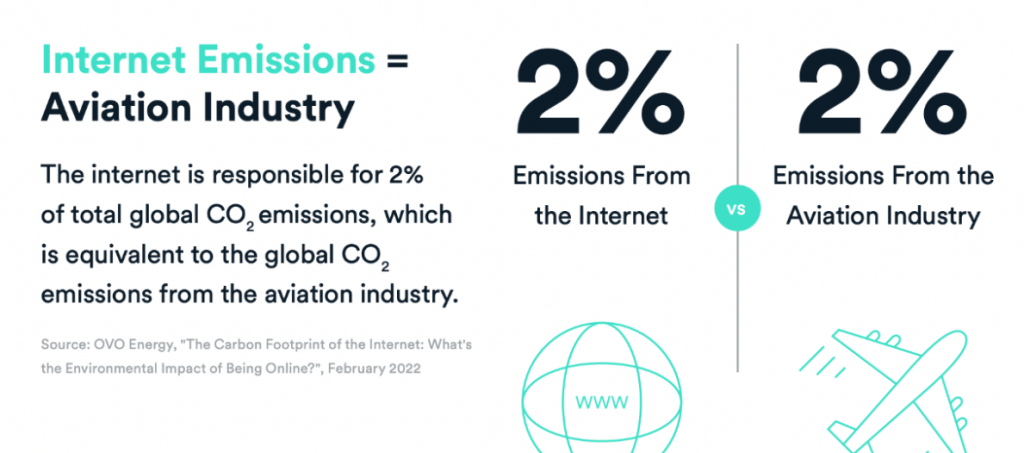The Future of Sustainable Advertising: A Conversation with Harvin Gupta, Scope3
10 Apr, 20235 MinutesIn today's world, sustainability has become a critical aspect of almost every industry. Adve...

In today's world, sustainability has become a critical aspect of almost every industry. Advertising is no exception. With the increasing demand for sustainable practices and transparency, advertisers are looking for ways to reduce their carbon footprint and improve the environmental impact of their campaigns. In this article, we'll explore the role of sustainability in advertising, and how companies like Scope3 are helping to create a greener future for the industry.
We recently had the opportunity to chat with Harvin Gupta, Head of Commercial Partnerships at Scope3 on our Life in Digital Podcast, a company focused on decarbonizing media and advertising. With a mission-driven approach, Scope3 is dedicated to providing advertisers with the tools needed to measure and reduce their carbon emissions. Harvin shared some valuable insights about the current state of the industry and the potential for rapid decarbonization.
Click here to listen to the full episode with Scope3
According to Scope3, "just 2 of 55 largest US companies have scope 3 emissions goals in line with 1.5°C target". Advertising, a $700 billion industry, has often been overlooked as a source of significant supply chain emissions. However, sustainable advertising can contribute to the fight against climate change
Data Centers: The Carbon Emission Culprit
According to Harvin, the main source of carbon emissions in the advertising industry comes from data centers. The complex ecosystem of publishers, advertisers, SSPs, and resellers has led to an increase in data centers, which require a significant amount of electricity to power the servers and cool the facilities. This energy consumption results in a high level of carbon emissions.
However, Harvin is optimistic about the potential for rapid decarbonization in the advertising industry. By optimizing and simplifying the supply chain, advertisers can reduce their carbon emissions while also improving transparency and reducing fees. As Harvin puts it:
"Having incredibly long, complex supply chains is bad from a carbon perspective. But it's bad for so many other reasons. Healthy partnerships are generally working with fewer of them but with deeper relationships."

Scope3's Emissions Model: Empowering Advertisers to Make Greener Choices
Scope3's emissions model plays a significant role in helping advertisers identify and reduce their carbon footprint. By providing granular data on carbon emissions for each supply source, advertisers can make informed decisions about their campaigns and allocate budgets to lower-carbon sources. Harvin explains, "The advertiser has enough information to start moving budgets away from high carbon supply sources onto low carbon supply sources. And they can see that when the supply chain is exactly that. In our data, they can actually see, okay, the decisions I made resulted in this much carbon reduction."
Working closely with DSPs and SSPs, Scope3 enables these platforms to offer tools and data that help advertisers optimize and decarbonize their campaigns. For example, DSPs can incorporate carbon data into their optimization algorithms, allowing advertisers to set carbon as a primary or secondary KPI. Additionally, SSPs and publishers can offer green media products that meet specific sustainability thresholds, such as being in the 80th percentile or lower for carbon emissions.
A Promising Future for Sustainable Advertising
"We're in a rush... We need to decarbonize rapidly"
The ad industry is taking significant steps towards carbon neutrality. Ad Net Zero, a UK-based coalition of 100 agencies, aims to eradicate carbon emissions in advertising by 2030. "It’s the biggest change in our industry in 100 years," says Stephen Woodford, CEO of The Advertising Association. With the launch of Ad Net Zero USA, the coalition plans to standardize the measurement of a brand campaign's carbon footprint through a carbon calculator called Ad Green and provide standardized sustainability training for the entire advertising industry.
Consumer awareness about the environmental impact of the advertising industry has been steadily growing in recent years. As climate change and other environmental issues become increasingly prominent, more people are recognizing the need for industries, including advertising, to adopt sustainable practices.
This heightened awareness is driving a shift in consumer preferences towards eco-friendly brands and campaigns. Consumers are now more likely to support and engage with brands that demonstrate a genuine commitment to sustainability and reducing their environmental impact. A recent Havas Meaningful Brands report revealed that 55% of consumers believe brands play a more important role than governments in creating a better future. Moreover, a Sharethrough study found that 80% of consumers would favor brands that actively work to reduce their carbon emissions.
Overall, the future of sustainable advertising looks promising. With companies like Scope3 leading the way, advertisers can gain valuable insights and tools to optimize their campaigns and reduce their carbon footprint. As the industry continues to prioritize sustainability, we can expect to see significant progress in the coming years.




